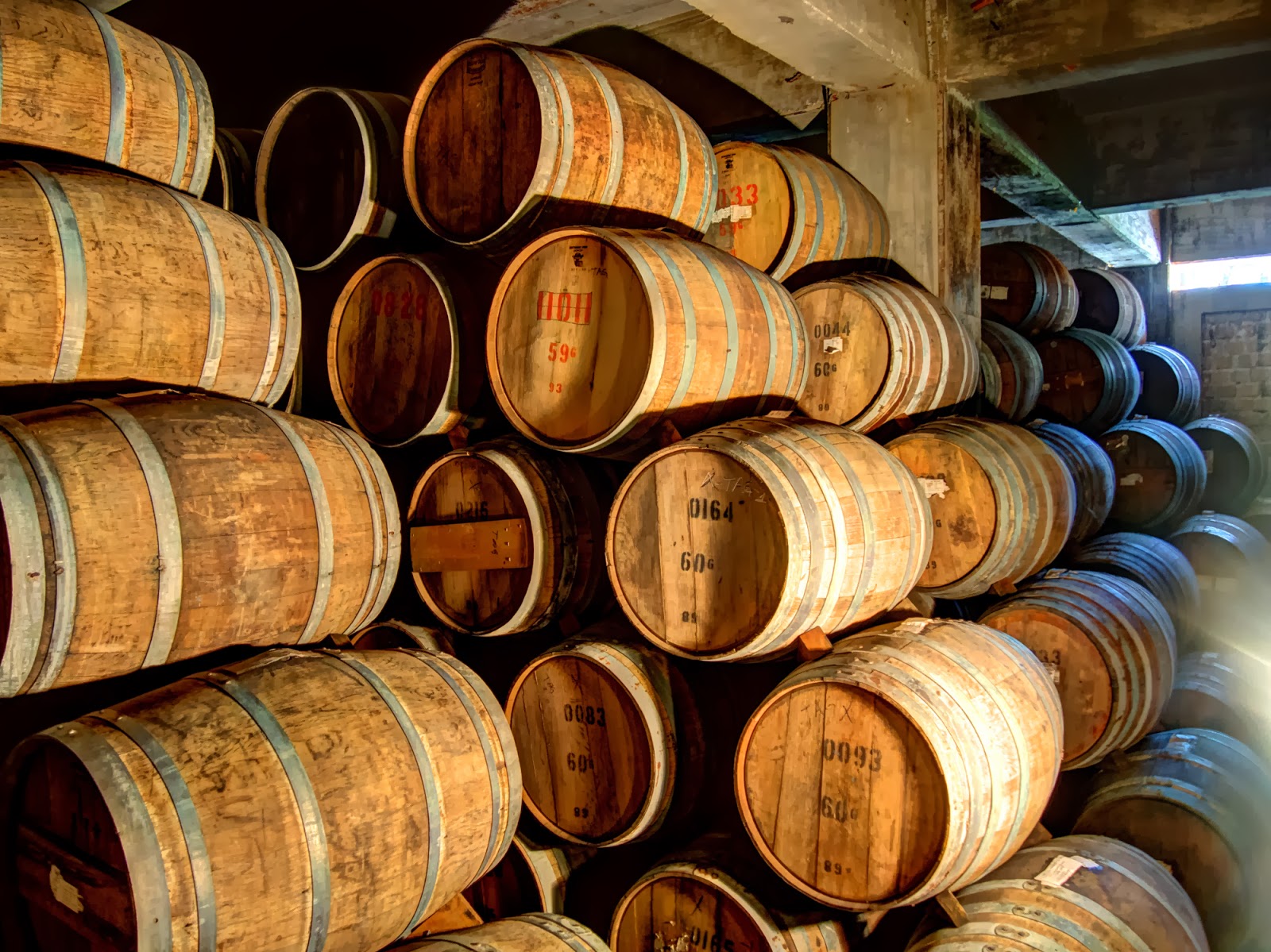The
town of tequila sprouted from the base of a now extinct volcano that
was originally responsible for creating the unique terroir that makes
tequila's appellation so important. Agave grown in the valley grows
small and has deep roots in a soil featuring obsidian and a great
minerality. The plants grow larger and more dense with sugar in the
mountains thanks to an abundance of iron there.
Agave's
life cycle is too long to repopulate fields by traditional methods,
so fields are repopulated by plucking and replanting rhizomes, little
clones that each plant will sprout four to five of in its lifetime.
The plant signals its maturity by oozing a red goo, rich with the
starch so important for distillation. At that stage, a jimador will
cut the agave out of the ground and remove all of its fronds, leaving
only the piña.
Each piña
will yield roughly twelve bottles of tequila. The piñas
are then transported by truck, or even still burros in rough weather
or uneven terrain. The piña
must then be cooked. Many of the big distilleries today, including
Sauza, Cuervo, and Herradura, shortcut the process using a chemical
cooking method with machines called diffusers. Traditionally, the
piñas
are crushed by a large stone wheel called a tohoma. Many
distilleries still implement a percentage of stone crushed agave –
Don Julio does, but they don't disclose the percentage – but
Fortaleza is the only distillery on the scene to use stone crushing
exclusively. This process extracts mosto, the juice that will be
fermented. The first distillation yields ordinario. The second,
tequila.
In
all, we toured three distilleries and I probably had a couple hundred
dollars worth of fine aged tequilas, including an extro añejo
aged nine years retailing for $230 a bottle and a three, four, and
five year blend retailing at $500. A passionate young representative
at Don Fulano opened a rare master blend for us to try, his uncle's
swan song as he put it, as it was the last blend his uncle made
before passing.
The
Sauza name was sold decades ago when the owner thought the business
wouldn't remain family run. The Sauzas retained a 30% share, but the
company was run at a loss to dilute those shares. Now Guillermo and
his son Billy are underdogs in a town their family helped build.
Ceurvo wants to turn the place into something of a tequila themed
amusement park, and they drew a mockup of the town with a big tequila
train running right through the Sauza family's property.
 |
| Fortaleza Distillery |
Walking
through agave fields framed by other natural growth was oddly
soothing. The topography wasn't at all unlike that where I grew up
in Southern California, just being perhaps an amplified version of
it. The agave, cactus, tamarind trees, and all kinds of goofy
looking plants I couldn't name, contorting themselves into clever
shapes to survive in such an arid environment, had me feel like I was
walking the the landscape of a Dr. Seuss book. By sunset, the clouds
were deeply stained in pink and the blue in the agave glowed all the
bluer.
This
night's party was to be a the Fortaleza distillery and in its
adjacent hill set cave, developed to accommodate aging barrels and
guests with a dimly lit bar in the back. Locals were catering and I
had the best churros I've tasted in all my life. I stole away from
the party with two others for a moment to climb a hillside agave
field and lay out on stones beside the hill path. Above us were
stars I hadn't seen in too long – the stars behind the stars –
and fruit bats whizzing about, their nights having just begun.
I
rejoined the fray in the cave and took some reposado. And then some
more. An Englishman borrowed a local's guitar and delivered a
gorgeous set of American southwestern style folk music with a voice
scratched with tin and cactus needles (why are the English so good at
American music?). Shots were being lapped up from thighs under
raised skirts. Shouts and embraces of drunken camaraderie were in
every corner, culminating into proud and bellowing renditions of
Mexican anthems. It was my fantasy of what a wild night in Mexico
should be.








No comments:
Post a Comment